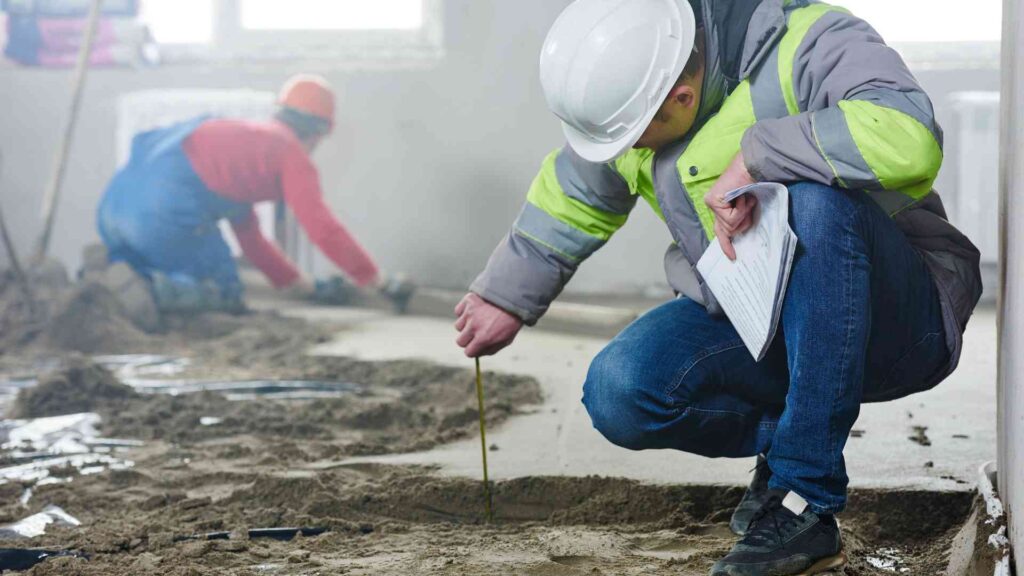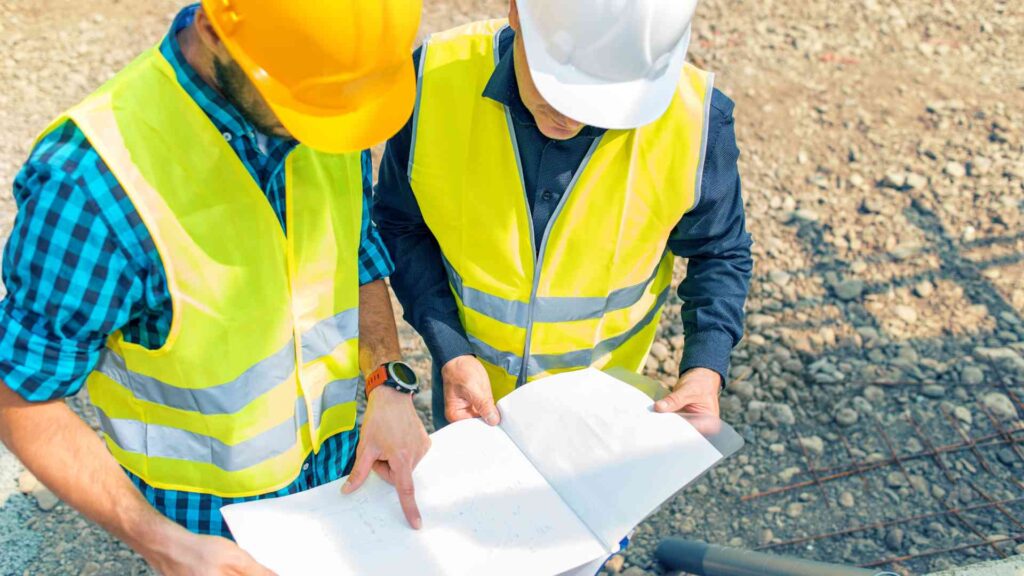Concrete is a versatile and popular material used for a variety of construction projects, including driveways, patios, and walkways. When it comes to enhancing the appearance of concrete, two common options are stamped and stained concrete. Understanding the differences between these two options can help you make an informed decision on which one is right for you.
Understanding the Basics of Concrete
Before diving into the differences between stamped and stained concrete, it’s important to have a basic understanding of concrete itself. Concrete is a versatile and durable material that has been used in construction for centuries. It is composed of a mixture of cement, water, and aggregates such as sand, gravel, or crushed stone. These ingredients are carefully proportioned and mixed together to create a paste-like substance that can be poured into molds or forms.
Once poured, concrete undergoes a process called curing, where it gradually hardens and solidifies. This process is essential for the development of its strength and durability. During curing, the cement particles hydrate and form chemical bonds with the water, creating a strong and cohesive structure. The aggregates provide additional strength and stability to the concrete, while also giving it a characteristic texture and appearance.
Both stamped and stained concrete start with this basic foundation. They are decorative techniques that can transform plain concrete into visually appealing surfaces that resemble other materials or have unique color variations.
What is Stamped Concrete?
Stamped concrete is a popular choice for enhancing the aesthetic appeal of concrete surfaces. It involves imprinting patterns, textures, or designs onto freshly poured concrete. Special stamps, made of rubber or polyurethane, are pressed into the concrete to create the desired look. These stamps can mimic the appearance of various materials, such as brick, stone, tile, or wood.
The process of stamping concrete requires precision and skill. The concrete must be poured and leveled properly to ensure an even surface. Once the concrete reaches the right consistency, the stamps are applied, leaving behind imprints that give the concrete a realistic and textured appearance. After stamping, the concrete is left to cure and harden, resulting in a durable and long-lasting surface that can withstand heavy foot traffic and the elements.
Stamped concrete offers a wide range of design possibilities. It can be customized to suit different architectural styles and personal preferences. Whether you want a rustic cobblestone pathway, a sleek and modern tile patio, or a warm and inviting wood deck, stamped concrete can replicate the look and feel of these materials at a fraction of the cost.
What is Stained Concrete?
In contrast to stamped concrete, stained concrete focuses on adding color and depth to the surface of cured concrete. Stained concrete is a popular choice for those who want to enhance the natural beauty of concrete while maintaining its unique texture and character.
The staining process involves applying a semi-transparent color to the surface of cured concrete. Unlike paint, which sits on the surface, the stain penetrates the pores of the concrete, chemically reacting with the minerals to create color variations and a natural, mottled look. This chemical reaction creates a permanent bond between the stain and the concrete, ensuring long-lasting color that won’t fade or peel over time.
Stained concrete is available in a wide range of colors, allowing for customization to suit individual preferences. From earthy browns and warm reds to vibrant blues and greens, there is a stain color to complement any design scheme. Additionally, stains can be combined or layered to create unique effects and patterns, adding depth and visual interest to the concrete surface.
One of the advantages of stained concrete is its versatility. It can be used on both interior and exterior surfaces, making it a popular choice for floors, countertops, driveways, patios, and more. Stained concrete is also compatible with other decorative techniques, such as scoring or engraving, which can further enhance its visual appeal.
The Differences Between Stamped and Stained Concrete
When it comes to enhancing the appearance of your space, both stamped and stained concrete offer unique benefits and differences that are worth exploring.
Let’s start by discussing the appearance and aesthetic differences between these two options. Stamped concrete is known for its ability to replicate the appearance of other materials with remarkable accuracy. It offers a wide selection of patterns and textures, allowing you to achieve the look of elegant stone or classic brick at a fraction of the cost. The versatility of stamped concrete is truly impressive, as it can mimic various materials, including slate, cobblestone, and even wood. This makes it an excellent choice for those who want to create a specific ambiance or match existing architectural elements.
On the other hand, stained concrete takes a different approach to aesthetics. Instead of imitating other materials, stained concrete embraces the natural variations and textures of the concrete itself. By applying stains and dyes, you can create a more organic and unique look that adds character and depth to your space. Stained concrete allows you to showcase the inherent beauty of the material, with its subtle color variations and marbling effects. It is an ideal choice for those who appreciate the raw beauty of concrete and want to create a visually captivating environment.
Now, let’s delve into the durability and maintenance differences between stamped and stained concrete. Both options are known for their longevity when properly installed and maintained. However, there are some distinctions to consider. Stamped concrete, while durable, may require periodic resealing to maintain its color and protect against wear and tear. This resealing process helps to preserve the vibrancy and integrity of the stamped patterns, ensuring that they remain visually appealing for years to come. On the other hand, stained concrete, once sealed, is generally more resistant to fading, peeling, and discoloration. The stains penetrate the concrete, creating a bond that withstands the test of time and minimizes the need for extensive maintenance.
Cost is another factor to consider when deciding between stamped and stained concrete. Stamped concrete tends to be more expensive upfront due to the additional labor and materials required for the stamping process. The intricate patterns and textures created by stamping require skilled craftsmanship, which adds to the overall cost. However, it is important to note that the long-term maintenance costs of stamped concrete are relatively low, making it a cost-effective choice in the long run. On the other hand, stained concrete typically has lower upfront costs but may require occasional maintenance to preserve its appearance and longevity. This maintenance may involve resealing or touch-ups to ensure that the stains remain vibrant and the concrete remains protected.
In conclusion, both stamped and stained concrete offer unique advantages and differences in terms of appearance, durability, and cost. The choice between the two ultimately depends on your personal preferences, budget, and the desired aesthetic for your space. Whether you opt for the elegant replication of stamped concrete or the organic beauty of stained concrete, both options are sure to enhance the overall appeal of your space and create a lasting impression.
Pros and Cons of Stamped Concrete
Benefits of Choosing Stamped Concrete
- Wide variety of patterns and textures available
- Can mimic the appearance of other materials
- Durable and long-lasting when properly maintained
Drawbacks of Stamped Concrete
- Requires periodic resealing to maintain color and protect against wear
- Higher upfront costs compared to stained concrete
- Potential for patterns to fade or wear over time
Pros and Cons of Stained Concrete
Benefits of Choosing Stained Concrete
- Creates a unique and natural look
- Wide range of colors available for customization
- Less expensive upfront compared to stamped concrete
Drawbacks of Stained Concrete
- May require occasional maintenance to preserve appearance
- Colors can vary depending on the concrete’s composition
- Less realistic in replicating the appearance of other materials
Factors to Consider When Choosing Between Stamped and Stained Concrete
Now that you’re aware of the differences and pros and cons of stamped and stained concrete, it’s important to consider several factors when making your decision.
Your Home’s Architectural Style
Consider how the chosen concrete option will complement your home’s architectural style. Stamped concrete can help create a cohesive look by mimicking the appearance of the surrounding materials, while stained concrete can provide a more modern or rustic touch.
Your Budget and Long-Term Maintenance Costs
Evaluate your budget and long-term maintenance preferences. Stamped concrete may have higher upfront costs, but with proper maintenance, it can withstand heavy foot traffic for years. Stained concrete, although initially cheaper, may require periodic resealing or touch-ups to maintain its appearance.
Your Personal Style and Preferences
Ultimately, your personal style and preferences should guide your decision-making process. Consider which visual aesthetic resonates with you and complements your overall design vision.
Stamped vs. stained concrete may offer different benefits and considerations, but both options can enhance the appearance of your concrete surfaces. By understanding the differences and considering key factors, you can confidently choose the right option for your needs and create a beautiful, long-lasting space.


